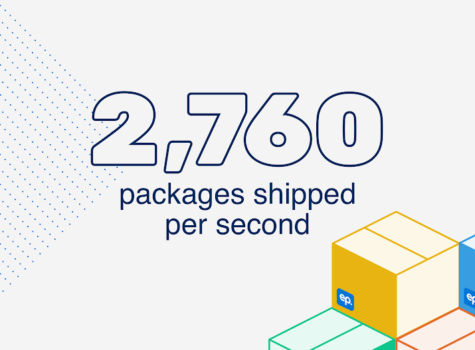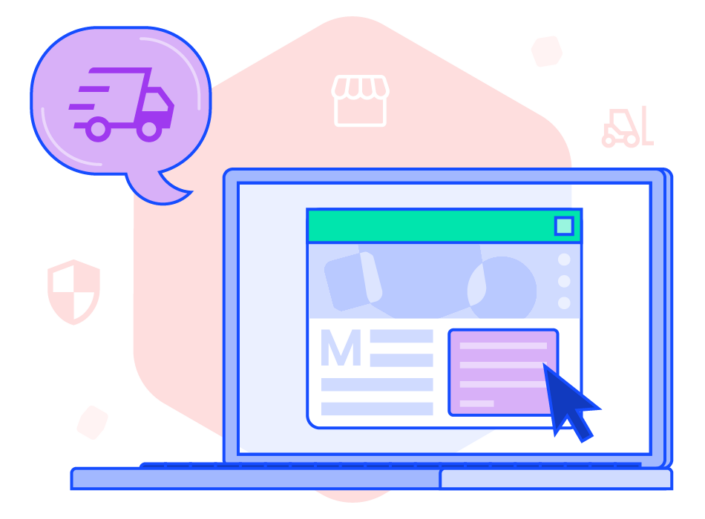Peak shipping season is nearly upon us. But, how should you begin and what should you prioritize for your business?
In Part 2 of our three-part series on peak season shipping, we’re focusing on the top tips for ensuring your shipping technology is prepared for peak shipping season. After last year’s record volume of ecommerce orders — in December 2020 alone, total shipping volume was 22.3 million orders, up 19.3% from 18.7 million a year earlier — it’s imperative that businesses are proactive about planning in all aspects of operations, but especially shipping logistics.
To read Part 1 highlighting frequently asked questions about peak season shipping, click here.
Tip 1: Build a Strong Foundation with Forecasting
Forecasting the operational resources you’ll need — labor, packaging, warehouse capacity, production — will set the foundation for a successful peak shipping season. Start by assembling strong reference points, such as:
- Year-over-year growth metrics
- Previous year performance
- Overall market trends
Together, these figures will help establish a strong baseline that provides reasonable expectations from which all teams can operate. Moving forward, continue to collect and analyze sales data to ensure forecasts remain accurate. Keeping a continuously updated forecast minimizes the risk of profits lost from overstocking or disappointed customers due to a shortage of merchandise.
Tip 2: Prepare Your Team for Success Through Shipping Automation
During the busiest time of the year, your employees should be laser-focused on offering the best customer service experience possible efficiently. Set your business and employees up for success by ensuring your shipping logistics are simple and automatic. The more you do, the more likely you’ll be able to push out orders reliably and quickly.
Start by partnering with a state-of-the-art 3PL provider, like EasyPost’s Shipping API, that simplifies the shipping process and enables businesses to deliver a positive online shopping experience. Important considerations to consider include:
- Multi-carrier shipping solutions allow you to ship with carriers like USPS, FedEx, UPS, among others. Since there is no one-size-fits-all carrier, having options when it comes to service level, transit time, and cost will enable you to have greater choice and flexibility when it comes to shipping.
- Diverse functionalities that allow you to connect with carriers, rate shop between service levels, verify addresses, and purchase, generate, and print shipping labels. Your shipping API should allow you to find the right service level, at the right price, every time.
Tip 3: Have Multiple Plan Bs
Accidents happen. Inclement weather can shut down cities. Carriers can become overloaded. Then, chaos ensues. You don’t want that for your packages or your customers. One way to mitigate this risk is to spread inventory across multiple fulfillment centers, so if one gets knocked out temporarily, orders can still be fulfilled by others.
The second is to have backup carriers in case your primary partner isn’t able to take up any more packages for you. In this instance, we’d recommend that you establish relationships with secondary and tertiary carriers now.
Lastly, have and use shipping insurance. EasyPost offers its own Insurance specifically to help ecommerce businesses avoid the high fees, complicated claims process, and long wait times for a reimbursement check that burden carrier insurance offerings.
Tip 4: Tracking Transparency and Communication are King
The tracking experience should be more than directing your customers to the carrier’s website to locate their package. Instead, your multi-carrier shipping API should enable you to provide a branded, customer-centric experience. Pushing tracking updates from carriers regularly and having webhooks available to enable automated SMS and email alerts are at the core of a good tracking experience.
Tip 5: Prepare for Returns
Peak shipping season isn’t just the biggest sales period of the year, it’s also a precursor to the biggest returns period of the year. Having a good return policy is a huge driver in maintaining customer loyalty, and a good return policy is only as good as the operations behind them. Here is a basic framework to build your unique returns policy:
- Receiving team receives a return and inspects these four values:
- Who returned the shipment?
- Which products have been received?
- What condition are the products in?
- Do the products match the original order?
- Receiving team verifies the return. Return policy dictates refund, credit, or replacement.
- Receiving or operations team recycles the item back into stock depending on the condition of the product.
From here, you can customize and personalize the returns experience to your unique business. But, using this foundation will get you started in retaining the value of your merchandise while simultaneously providing customer satisfaction.
Bonus Tip: Partner with EasyPost
As one of the best multi-carrier shipping APIs on the market, EasyPost simplifies the shipping process and enables ecommerce businesses to deliver a positive online shopping experience. Look to EasyPost to be your ultimate shipping partner during this upcoming peak season and many more to come.




